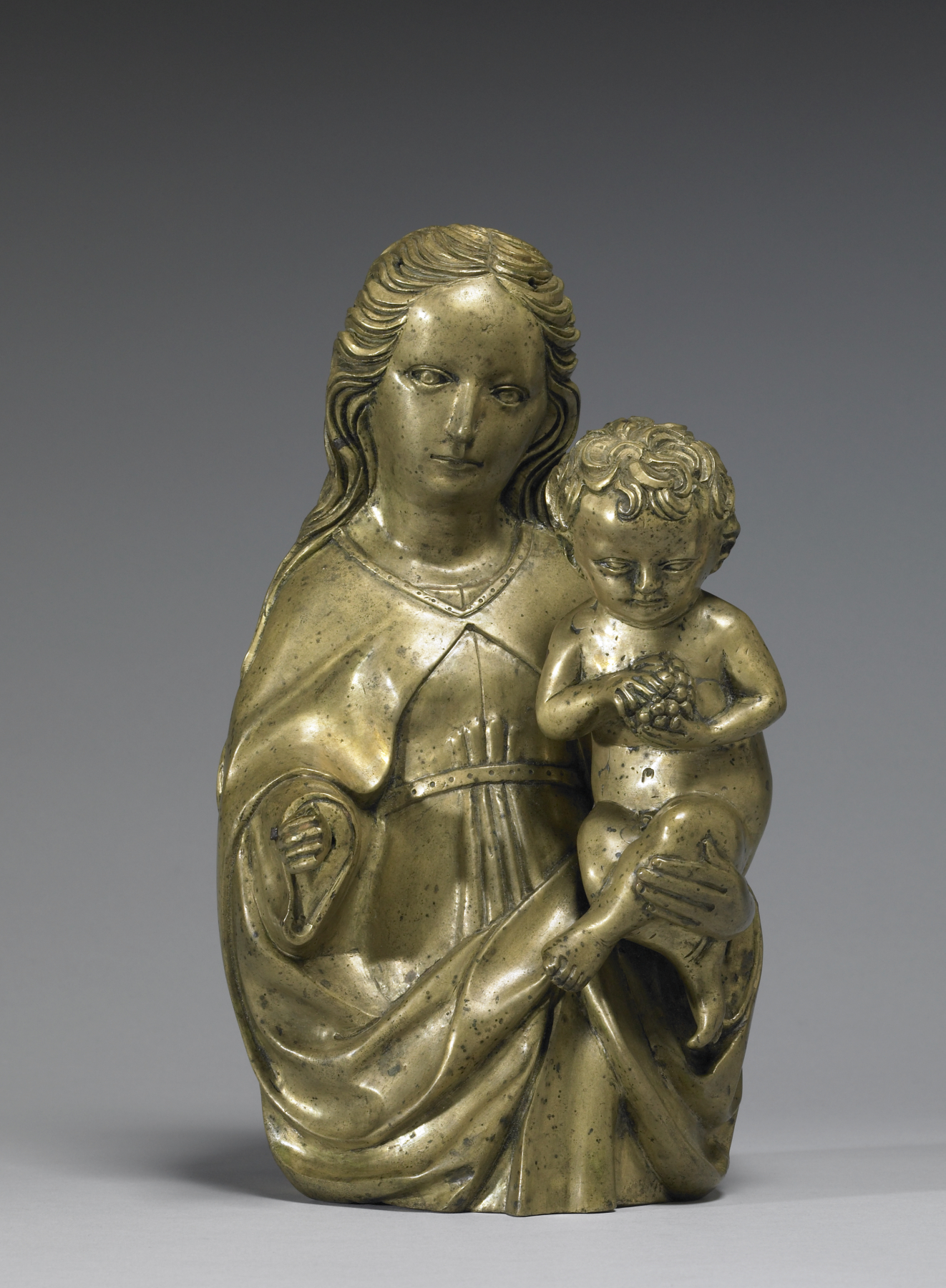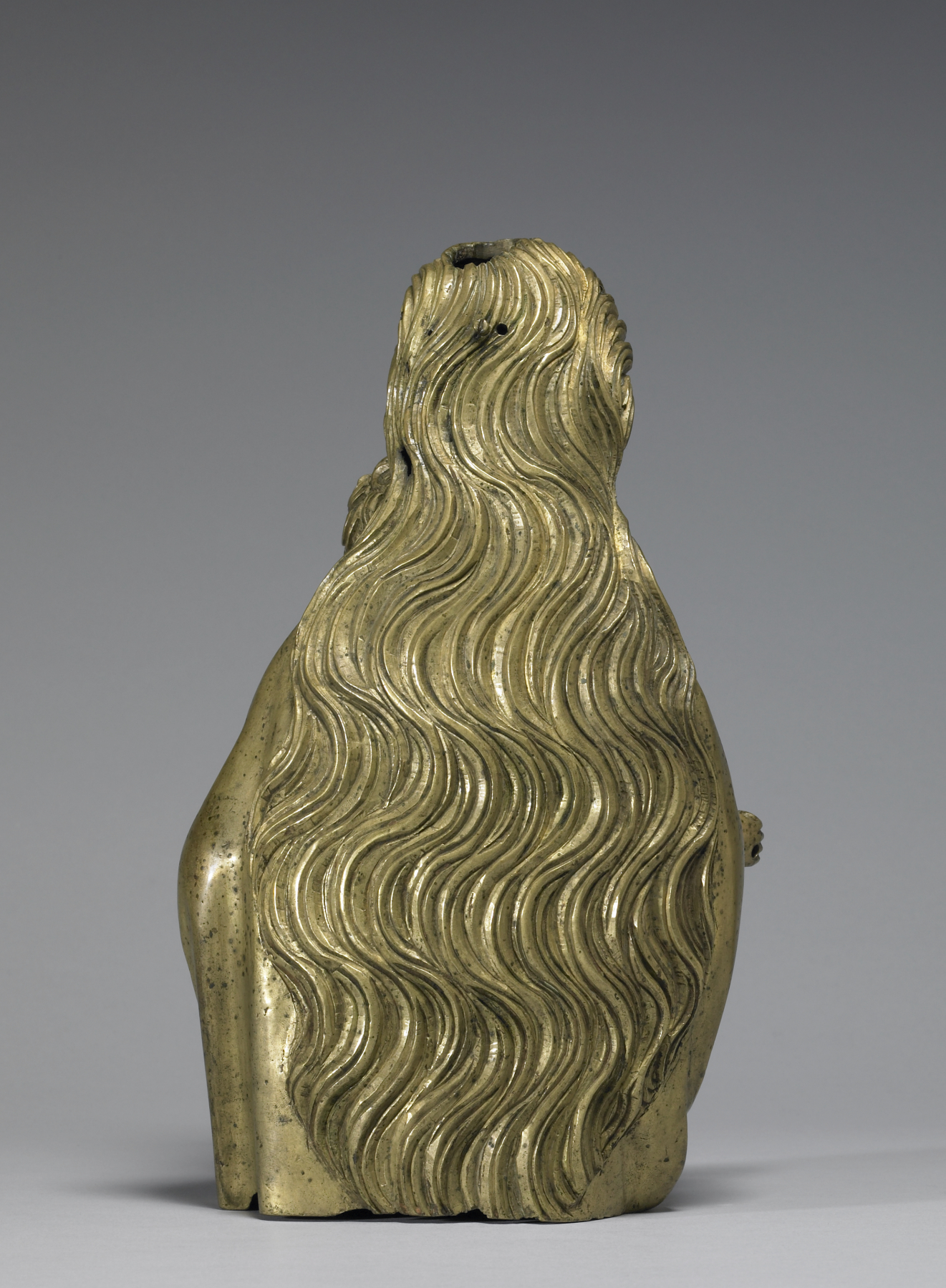Virgin and Child
(Medieval Europe )
This statuette once topped a large candlestick or chandelier. The figure is hollow, and the large opening on its top is a result of the casting process. Smaller holes on the sides of the Virgin's head show that she once wore a crown. Her right hand, separately cast and attached by a pin, originally likely held a scepter or a lily (symbol of Mary's purity). The grapes clasped by the infant Christ allude to the wine of Communion and, thus, to the blood shed by him at Calvary.
Provenance
Provenance (from the French provenir, 'to come from/forth') is the chronology of the ownership, custody, or location of a historical object. Learn more about provenance at the Walters.
Stefano Bardini, Florence, by purchase; Sale, Christie's, London, June 5, 1899 or May 26, 1902; George Robinson Harding, London [date of acquisition unknown], by purchase; Henry Walters, Baltimore [date of acquisition unknown], by purchase; Walters Art Museum, 1931, by bequest.
Exhibitions
| 2008-2009 | Realms of Faith: Medieval and Byzantine Art from the Walters Art Museum. Museum of Biblical Art, New York; Colby College Museum of Art, Waterville; Joslyn Art Museum, Omaha. |
Conservation
| Date | Description | Narrative |
|---|---|---|
| 4/15/1955 | Treatment | cleaned; examined for exhibition |
| 9/26/1958 | Treatment | cleaned |
| 9/5/1974 | Treatment | cleaned |
| 10/1/2007 | Treatment | cleaned; other |
| 10/23/2007 | Examination | examined for condition |
Geographies
Flanders (Place of Origin)
Measurements
10 1/4 in. (26 cm)
Credit Line
Acquired by Henry Walters
Location in Museum
Not on view
Accession Number
In libraries, galleries, museums, and archives, an accession number is a unique identifier assigned to each object in the collection.
In libraries, galleries, museums, and archives, an accession number is a unique identifier assigned to each object in the collection.
53.43




